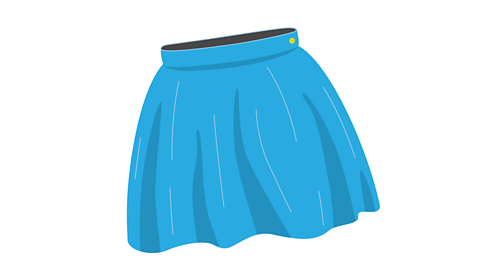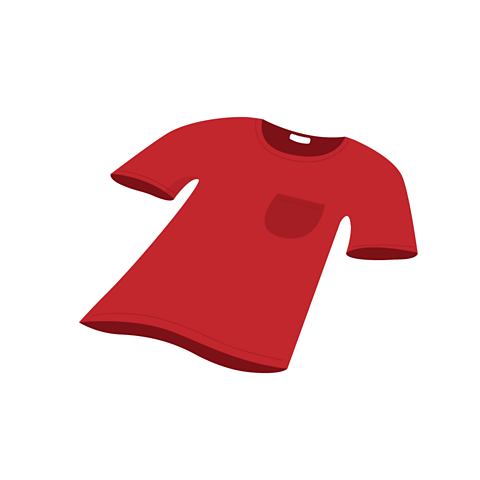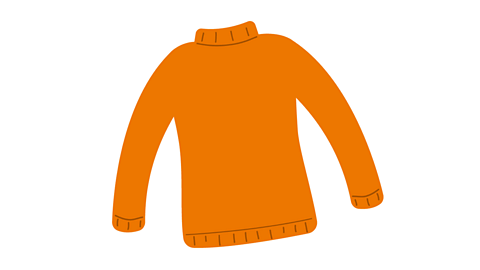
Colours in French
Colours are adjectives as they act as describing words to give you more information about a noun.
Colours are really helpful words to know in any language, so that you can describe things such as clothes and other objects.
Have a look at these colours and see how many you can remember.
| French | English |
|---|---|
| Check your connection, refresh the page and try again. | white |
| Check your connection, refresh the page and try again. | blue |
| Check your connection, refresh the page and try again. | grey |
| Check your connection, refresh the page and try again. | yellow |
| Check your connection, refresh the page and try again. | brown |
| Check your connection, refresh the page and try again. | black |
| Check your connection, refresh the page and try again. | orange |
| Check your connection, refresh the page and try again. | pink |
| Check your connection, refresh the page and try again. | red |
| Check your connection, refresh the page and try again. | green |
| Check your connection, refresh the page and try again. | purple |

Using colours to describe singular nouns
In French, nouns belong to either a masculine or feminine group. So an adjective needs to be either masculine or feminine, like the noun it is describing.
This means that the spelling of the adjective changes to match the gender of the noun. This is called an agreement.
Regular adjectives, such as vert (green), noir (black) and bleu (blue), follow the same pattern when their spellings change.
For example, when you describe a masculine noun, regular colour adjectives look the same as those in the list above.
- Check your connection, refresh the page and try again. - I am wearing a blue jumper
When you describe a feminine noun, you add an e at the end of the regular adjective:
- Check your connection, refresh the page and try again. - I am wearing a blue skirt

Using colours to describe plural nouns
The spelling of adjectives can also change in French if the noun is plural. This means when there is more than one item.
When you are describing a masculine plural noun using a regular colour adjective, you add s to the end of the adjective:
- Check your connection, refresh the page and try again. - a blue jumper
- Check your connection, refresh the page and try again. - two blue jumpers
If you are describing a feminine plural noun, you add es to the adjective.
- Check your connection, refresh the page and try again. - a blue skirt
- Check your connection, refresh the page and try again. - two blue skirts
Don't forget that you also usually add s to the noun to make it plural.
So the endings for regular adjectives are as follows:‚Äé
| form | ending |
|---|---|
| masculine singular | no change |
| feminine singular | -e |
| masculine plural | -s |
| feminine plural | -es |
Here are the forms of some regular adjectives. Can you use them to describe the colour of your own clothes? For example:
- Check your connection, refresh the page and try again. - a black cap
Try reading this article on Clothes and accessories to help you to remember the items of clothing in French.
| Masculine singular | Feminine singular | Masculine Plural | Feminine Plural | English |
|---|---|---|---|---|
| Check your connection, refresh the page and try again. | Check your connection, refresh the page and try again. | Check your connection, refresh the page and try again. | Check your connection, refresh the page and try again. | blue |
| Check your connection, refresh the page and try again. | Check your connection, refresh the page and try again. | Check your connection, refresh the page and try again. | Check your connection, refresh the page and try again. | black |
| Check your connection, refresh the page and try again. | Check your connection, refresh the page and try again. | Check your connection, refresh the page and try again. | Check your connection, refresh the page and try again. | green |

Exceptions
Some colour adjectives are irregular, which means that they don’t follow the same pattern as the regular colour adjectives.
Gris (grey) doesn't change when it comes after a masculine plural noun, like des gants (some gloves).
Check your connection, refresh the page and try again. - I am wearing a grey jumper
Check your connection, refresh the page and try again. - I am wearing some grey gloves
Remember that if an adjective already has an e on the end, it doesn't change in the feminine form.
Check your connection, refresh the page and try again. - I am wearing a red t-shirt
Check your connection, refresh the page and try again. - I am wearing a red skirt
| Masculine singular | Feminine singular | Masculine Plural | Feminine Plural | English |
|---|---|---|---|---|
| Check your connection, refresh the page and try again. | Check your connection, refresh the page and try again. | Check your connection, refresh the page and try again. | Check your connection, refresh the page and try again. | red |
| Check your connection, refresh the page and try again. | Check your connection, refresh the page and try again. | Check your connection, refresh the page and try again. | Check your connection, refresh the page and try again. | yellow |
| Check your connection, refresh the page and try again. | Check your connection, refresh the page and try again. | Check your connection, refresh the page and try again. | Check your connection, refresh the page and try again. | pink |

Two of the colour adjectives for 'white' and 'purple' change their spelling a little by adding an extra letter in the feminine form. Can you spot the spelling change?
| masculine singular | feminine singular | masculine plural | feminine plural | English |
|---|---|---|---|---|
| Check your connection, refresh the page and try again. | Check your connection, refresh the page and try again. | Check your connection, refresh the page and try again. | Check your connection, refresh the page and try again. | white |
| Check your connection, refresh the page and try again. | Check your connection, refresh the page and try again. | Check your connection, refresh the page and try again. | Check your connection, refresh the page and try again. | purple |
Check your connection, refresh the page and try again. - She has a white jumper
Check your connection, refresh the page and try again. - She has a white skirt
Check your connection, refresh the page and try again. - He has some white gloves
Check your connection, refresh the page and try again. - He has some white shoes
Check your connection, refresh the page and try again. - She has a purple jumper
Check your connection, refresh the page and try again. - She has a purple skirt
Check your connection, refresh the page and try again. - He has some purple gloves
Check your connection, refresh the page and try again. - He has some purple shoes

The adjectives orange (orange) and marron (brown) don't change their spelling at all, even when they are describing a feminine or a plural noun:
Check your connection, refresh the page and try again. - He has an orange jumper
Check your connection, refresh the page and try again. - He has an orange shirt
Check your connection, refresh the page and try again. - He has two orange jumpers
Check your connection, refresh the page and try again. - She has a brown jumper
Check your connection, refresh the page and try again. - She has a brown shirt
Check your connection, refresh the page and try again. - She has two brown jumpers

| Masculine singular | Feminine singular | Masculine plural | Feminine plural | English |
|---|---|---|---|---|
| Check your connection, refresh the page and try again. | Check your connection, refresh the page and try again. | Check your connection, refresh the page and try again. | Check your connection, refresh the page and try again. | brown |
| Check your connection, refresh the page and try again. | Check your connection, refresh the page and try again. | Check your connection, refresh the page and try again. | Check your connection, refresh the page and try again. | orange |

Did you know?
Did you notice that in French, colour adjectives come after the noun that you're describing?
So Check your connection, refresh the page and try again. is like saying 'some trousers brown' in English.

Key French sounds
Below are some important French sounds that you have heard in this topic. Try practising them yourself out loud.
- r
This letter makes a sound which is not in the English language. It sounds as if you are gargling water. It comes from the back of the throat and sounds longer than the r sound in English.
- Check your connection, refresh the page and try again. - green
- Check your connection, refresh the page and try again. - pink
- ou
This sound is also in the English language. It can be written as ou, o√π or ¥«√ª.
To make this sound, purse your lips tightly like a chimpanzee might do.
- Check your connection, refresh the page and try again. - red
- o at the end of a word, ô, au and eau
These letters make a sound not found in English.
Make your lips into a round shape and sound as if you have had a shock.
- Check your connection, refresh the page and try again. - yellow
Also written as ô, au and eau
Bitesize Primary games. game
Play fun and educational primary games in science, maths, English, history, geography, art, computing and modern languages.

More on Topics
Find out more by working through a topic
- count12 of 12

- count1 of 12

- count2 of 12

- count3 of 12
